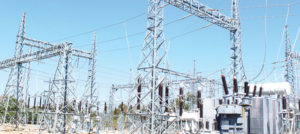
Electricity is out of reach of many Malawians
Minister of Energy Newton Kambala says government wants to seea reduction in electricity tariffs to increase electricity penetration currently at 11.5 percent. In an interview on Tuesday, the ministerexpressed displeasure with the current electricity tariffs, which he said denies many Malawians access to electricity.
He said: “We will achieve this by negotiating with investors what we want and also diversify our energy sources to nuclear, coal-fired plants and advocate for increased use of liquid petroleum gas (LPG).
“As you know, the cost of doing business in the country is high because of the high cost and insufficient electricity,”
To ullustrate his point on howhigh electricity tariffs are in the country, Kambala said Electricity Supply Corporation of Malawi (Escom) buys electricity from generation companies at an average of $0.13 (about 96.20) per kilowatt hour (kWh), far above $.0% (K37) that utility companies in India and China pays to generation companies.

Kambala: We will achieve this
In an ideal situation, the minister said if Escombought the same at $0.08 (K59.20) or less, consumers would be in a better position to access affordable electricity.
Currently, Mera figures show that Escom sells electricity to 11.5 percent of the population connected to the National grid at 88.02 per kWh.
By 2023, government’s aspiration is to have 100 percent wlectricity penetration, comprising 30 percent connections by grid and 70 percent by off-grid.
With a thriving income realised from selling tomatoes and locally brewed beer, Blantyre-based businessperson Grace Banda said she does not see the need to have her house electrified, because it is expensive. “As it is, I would rather light my house with solar lamps than electricity as I cannot afford,” she said.
Consumer Association of Malawi executive director John Kapito said in an interview that few people have access to electricity because of high tariffs. He said: “Several studies have been done in Malawi regarding the electricity tariffs and the country ended up coming up witha cost-reflective tariff electricity regime to ensure continued maintenance and supply of electricity and bring new enrgy genertion investers.
“But many consumers have been failing to access electricity because the tariffs are prohibitive.” A cost-reflective tarif is one which reflects the true cost of supplying electricity and removes the reliance on government subsidies to cover the variance between the current tariffs and the cost of supply of electricity.
Earlier, Escom announced that it was considering adopting a cost-reflective model to sustain operations on the market.
Escom chief executive officer Allexon Chiwaya said utility supplier wanted to find out how much it cost to produce one unit of electricity so that it sells that unit above the cost of prodution to sustain its operations.
On his part, Energy expert and former Escom chief executive officer Kandi Padambo observed on Monday that the minister’s quest to have electricity tariffs reduced should be understood in the context of unnecessary expenses and abuse reports at Escom, but a company such as Escom has a least cost development plan to ensure that the utility develops capacity to meet demand.
He said: “The cumulative effect of all this and other sub-optimal decisions and management malpractices is bloating of operations expenditure.
“Good tariffs must take into account the least cost development plan. Any reduction of electricity tariffs, therefore, factors in into long-term plans and provides the cost of capital to avoid copromising capacity development.”
Source: The Nation_October 1, 2020_ by Grace Phiri-News Analyst
